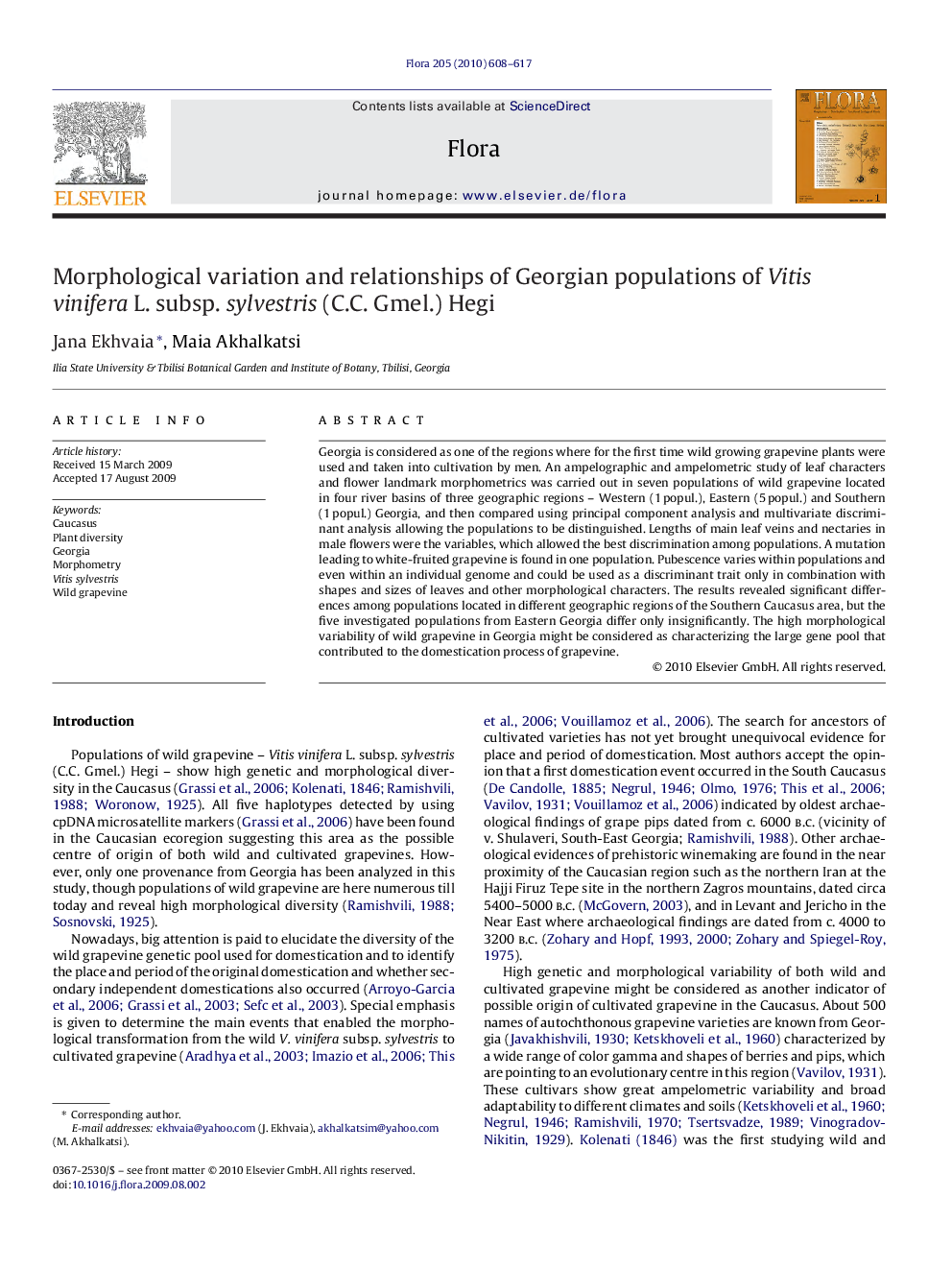| Article ID | Journal | Published Year | Pages | File Type |
|---|---|---|---|---|
| 2179834 | Flora - Morphology, Distribution, Functional Ecology of Plants | 2010 | 10 Pages |
Georgia is considered as one of the regions where for the first time wild growing grapevine plants were used and taken into cultivation by men. An ampelographic and ampelometric study of leaf characters and flower landmark morphometrics was carried out in seven populations of wild grapevine located in four river basins of three geographic regions – Western (1 popul.), Eastern (5 popul.) and Southern (1 popul.) Georgia, and then compared using principal component analysis and multivariate discriminant analysis allowing the populations to be distinguished. Lengths of main leaf veins and nectaries in male flowers were the variables, which allowed the best discrimination among populations. A mutation leading to white-fruited grapevine is found in one population. Pubescence varies within populations and even within an individual genome and could be used as a discriminant trait only in combination with shapes and sizes of leaves and other morphological characters. The results revealed significant differences among populations located in different geographic regions of the Southern Caucasus area, but the five investigated populations from Eastern Georgia differ only insignificantly. The high morphological variability of wild grapevine in Georgia might be considered as characterizing the large gene pool that contributed to the domestication process of grapevine.
